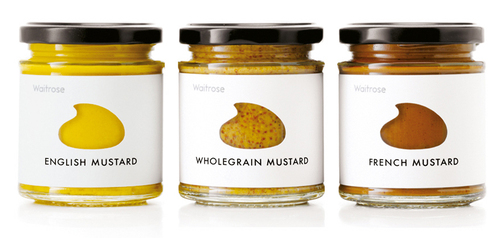
One of the trends: premiumisation of private label
The top five trends expected to shape the global retail market over the next 12 months have been unveiled by IGD, the international grocery research organisation. The predictions, identified by IGD’s international research, shopper insights and catalogue of global retail innovations, provide exclusive expertise into the key areas set to shake up the industry in 2018.
1. Premiumisation of private labelRetailers are increasingly using private label to appeal to a wide range of life stages as well as a change in shopping habits. The growing investment in these products to create a high quality offer is increasing the demand for ranges that meet shoppers’ needs for excellent value and great quality. Indeed, 75% of UK shoppers now believe the quality of private label products has improved over the last couple of years, and many retailers are putting more emphasis on affordable premium private label ranges, which we expect to continue.
Toby Pickard, IGD’s Innovations and Trends Analyst, said, “Private label ranges are a key area in which retailers can differentiate themselves and stand out in an increasingly complex and competitive retail market. For own label manufacturers this could provide additional volume but more pressure on costs. For brands, they will have to ensure their products are superior to justify the price. They are likely to achieve this through showcasing heritage and new products.”
2. Becoming hyperlocalDespite shoppers being globally minded, the desire to have links to local regions and buy local products will increase over the next year. This approach will result in retailers selling produce that will only be available for a short period of time, due to seasonality and availability, creating uniqueness and increased shopper desire to get these products when available.
This will introduce greater variation for shoppers but create more complexity within the supply chain. As stores aim to rotate produce and range more often there will be greater efficiencies, collaboration and communication within the supply chain.
Pickard said, “To achieve a hyperlocal offering, retailers will need to support small and medium-sized producers. This will be positively perceived by shoppers, as it helps them sustain their community and allows them to feel special, to be part of something unique. Industry will need to ensure that the products sold truly reflect the local communities’ tastes and desires, which will require in-depth local insights. Retailers could tie up with local events and traditions to mirror shoppers’ beliefs and values to help build loyalty.”
3. Delivering the goodsShopper expectations are continually increasing when it comes to getting the goods they want in a quick and easy way, with retailers so far meeting and even exceeding the demand with innovative delivery solutions. Increased competition amongst retailers to deliver to shoppers in more innovative and creative ways is therefore expected.
Retailers will aim to utilise the data and insights into shoppers’ purchasing behaviours to understand and potentially anticipate what shoppers want, when they want and where they want their goods, before shoppers even know themselves.
Pickard stated, “If shoppers continue to value innovations that offer convenience and time-saving solutions they will have less and less direct interaction with retailers and brands. To ensure they don’t get forgotten about in the mix of these developments, there will be a growing need for retailers and brands to stand out to shoppers.
'Gathering more customer data and using it to achieve long-term shopper loyalty will be critical for retailers and brands going forward. This will likely take the form of artificial intelligence utilising customer information to predict and fulfil shopper demand using automated delivery.
“Retailers may need to create value beyond convenience to differentiate themselves from their competitors, while also keeping fulfilment and delivery costs down.”
4. Leading in lifestyleHealth and wellness will continue to be a focus throughout 2018. Retailers are therefore expected to expand designated zones in-store and develop lifestyle-focused formats.
Retailers will offer more tailored, value-added lifestyle choices through the online channel, where they can help shoppers quickly and easily find products that help them lead healthier lives. With two-thirds (65%) of shoppers saying the clarity of nutritional information on pack is important to them when making product decisions, there will be a greater role for industry to support shoppers in achieving healthy lifestyles.
Vegetarian, flexitarian, better-for-you, free from and clean-living labels will continue to be among the fastest growing and will be a priority investment area for retailers. As mainstream retailers continue to create an appealing offer in health and wellness, specialist retailers in this area will become increasingly challenged.
Pickard commented, “Retailers and brands will need to stay very close to evolving food trends to ensure they are meeting the needs of increasingly diverse and demanding shoppers. The winners in this area will be those that are able to predict, create or respond very quickly to the next food lifestyle trend.”
5. Fulfilling storesPhysical stores are having to work harder than ever before to bring shoppers through the front door, with pressure mounting for retailers to cater to the rise of the ‘omnichannel shopper’ by offering a shopping experience that blends online, offline and big data to reinvent retail. As ecommerce transforms the grocery shopping experience there will be an increasing number of innovations that will showcase exciting produce, fulfil online orders in less time and offer more in-store shopper engagement.
Pickard said, “Retailers will be looking to enhance the physical store through showcasing exciting produce, while also offering practical solutions to meet the needs of shoppers who want to use a number of different channels. Brands should look to help retailers enhance the store experience for shoppers, while also being able to meet online fulfilment requirements.”
(source: IGD)
